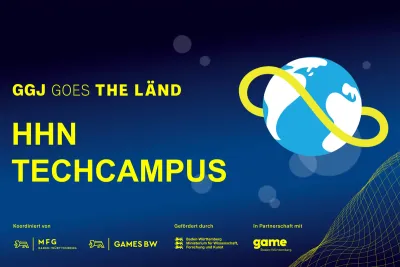
IT service management as a critical success factor
If current surveys on the megatrends in IT are to be believed, these are above all:
-
User orientation, to be determined by topics such as social networks, e-collaboration or "bring your own device"
-
Information management with topics such as big data and master data management
-
Flexible IT with topics such as standardized architectures, virtualization or cloud computing
-
Business orientation of IT with topics such as business process-oriented sourcing of IT services
-
Digitalization in various areas of life - smart services, devices, grids ... or Industry 4.0
-
Green IT with topics such as energy and resource-optimized operation of data centers, infrastructures and workstations
As an SME without a detour to the cloud?
Which of these five trends are relevant to SMEs can be deduced from the special features of SMEs described by Dibbern and Heinzl in 2001. According to this, SME IT departments suffer from a latent lack of resources, i.e. there is usually a lack of good employees and investment funds for innovations. At the same time, globalization and the increasing number of legal regulations (Basel3, GdPdU, SOX, etc.) are drastically increasing costs. The pressure to rationalize IT processes is growing accordingly. In such a situation, the topics of the third megatrend such as cloud computing, standardization and virtualization sound like promises of salvation and may even be so if - yes, if - the technological changes are also supported by a different organizational self-image, namely that of service orientation.
Average number of IT workstations managed
-
Without ITSM (approx. 7 workstations per IT employee)
-
Use of ITSM (approx. 13 workstations per IT employee)
Acting as an internal service provider and aligning IT processes with the requirements and performance processes of internal customers (specialist departments) requires a completely different mindset than feeling responsible solely for the availability of technologies (e.g. servers). Financing yourself by selling internal services from a service catalog and not via a fixed share of revenue changes the relationship between IT and the specialist department considerably. "In the end, service orientation leads to strong rationalization effects that result in resource savings of between 20 and 40 percent," reports Prof. Dieter Hertweck, who examined the effects of ITSM in a study in six countries.
Use saved resources sensibly!
The extent to which the resources saved are used for innovations such as the digitalization of cross-company business processes in purchasing, sales or product development remains controversial among experts. Recent studies have shown that numerous small and medium-sized companies are satisfied with the cost savings achieved in IT while maintaining the same quality of service, while others use the resources freed up for innovation. The IT manager of a particularly successful medium-sized company summed up this change to an innovator with the words: "Today, I no longer define my success by the number of Indians I am the chief of, but rather by whether I am one of the first people my managing director asks for advice when he is planning a new product or sales strategy." The INNOTRAIN IT survey proved that IT innovations in SMEs have a direct influence on profit development in the company.
Drivers for ITSM
-
Cost reduction
-
Increase in service quality
-
Competition
-
Compliance & regulations
-
New standards
-
Reduction of risks
-
Reduction of work overload
Barriers to ITSM
-
Misperception of ITSM
-
Entrenchment in functional thinking
-
Lack of cost awareness
-
Complexity of existing ITSM frameworks
-
Lack of knowledge
-
Work overload
-
Fear of further "bureaucracy"
The benefits of virtualization and standardization
If the advantages of new methods such as virtualization and standardization and their use in the context of IT service management reference models in terms of costs and innovation provide such benefits, why do many IT managers struggle with the paradigm shift? In addition to the often still lacking IT cost awareness in the specialist and IT departments, the complexity of existing ITSM frameworks such as CoBIT or ITIL is usually cited.The additional documentation work associated with them - together with the permanent increase in paperwork due to compliance regulations - is not considered desirable by many IT experts. The structured processing of user requests, documented system configurations based on these and self-updated emergency plans are a rarity in SMEs. Added to this is the weakness of many ITSM training courses, which are aimed more at large corporations and do not adequately address the philosophy of alignment, i.e. the connection between business and IT perspectives.
This leads to the often grotesque situation that CIOs are more likely to be found in strategically oriented CoBIT courses, while their IT managers and employees attend ITIL courses in which the area of service support is taught in appropriate detail, but service delivery topics are given far too little attention. As a result, there is usually an implemented service desk and perhaps good incident management, but the really important alignment of IT processes with the needs of business processes is not carried out. As ITSM depends on the company's top management regularly discussing new strategies and information technologies with the IT manager in order to implement innovations, the methods and practices described above can unfortunately not be described as suitable for SMEs today. The ITSM4SME and FEDSM projects are currently working on a possible solution to this dilemma - well worth a look!
Further information
Further information can be found in the projects mentioned above, but also in the established frameworks and their communities:
-
ITIL - itSMF Germany
-
COBIT - ISACA Germany
The original contribution by Prof. Dieter Hertweck and Philipp Küller to this blog article appeared in digital business magazine 1/2011.

